In any list of the finest anime episodes ever – a list in which Seirei no Moribito would be well-represented – Episode 3 would be a no-brainer. There’s a certain irony in this, though – it did what it did so well that it fooled some audience members into thinking this was a different sort of series than it was. And that, in turn, led to a measure of disappointment at the direction the show would take in its middle third. A third, I might add, which might very well be my favorite part of the series (though truthfully, I doubt I could ever choose).
Imagine this – an anime which delivers the finest combat scenes in the medium’s history (at least on the TV side), and about which that isn’t even its outstanding feature. That’s Moribito – and I don’t think I’m exaggerating. I, for one, have never seen fight scenes as gorgeously choreographed as the two in this episode – the first between Balsa and the Hunters, the second between Jiguro and one of his old comrades from Kanbal (honestly, I’ve forgotten which one). They still look as stunning as the day they aired – and the soundtrack adds so much to the impact.
But fight scenes don’t define this series, as historically great as they are. Nor do any of the other elements it would brilliantly layer in over the next 23 episodes. It’s the characters and the relationships between them that do that, and that’s the part of Seirei no Moribito I came to love the best. This episode is really a showcase for Chagum – it’s where we begin to see that he’s not merely an ill-fated child, but a boy of real courage and resourcefulness. And kindness too, as witness his interaction with the Hunter Jin.
With Balsa mortally wounded by the sword of Mon, the leader of the Hunters, it falls to Chagum to try and save her. Balsa gives him directions to Tanda’s hut, but he’s clearly out of his depth here. Or at least he should be. I love how Kamiyama-sensei lingers on Chagum’s face as he stares at the rocks which form the “back of a great bear”. He looks up, down, up again – no words are necessary, because we know what he’s thinking. “Impossible!” – but then, just as quickly, he brings himself back into the moment and considers what will happen if he gives up.
This episode also introduces what will become a major part of the story going forward, through the hallucinations Balsa sees as she bleeds out on the forest floor. At this point of course we have no way of knowing how Jiguro’s story will so elegiacally tie in to the present day – indeed, we don’t even know who this man is. But Uehashi and Kamiyama do, and the way Kamiyama chooses to tie the past into the present is in my view a considerable improvement over the novels do (and indeed, a reflection of the fact that he knew he’d likely only have one season to do it).
Episode 4 is a different beast altogether, focusing on some of the many other elements that make up this narrative. In many – frankly, all – ways, it’s much more representative of Seirei no Moribito as a whole. It’s remarkable how many layers there are to this series. Fantasy is one of them to be sure, and we get a glimmer of insight into what it is that may have possessed Chagum. But on balance politics is even more elemental to Moribito (this is a theme that will recur throughout the entire novel series). While the magical element is what drives much of the plot, it’s the politics of dealing with it that are most crucial to progressing that plot.
In truth though, it’s the characters who really make this series what it’s to become. They’re so layered, so nuanced, so real. And the way they interact with each other is spellbinding, even in the show’s quieter moments. Tanda and Balsa have a long history, and though we don’t get many details of it Kamiyama is able to convey that without exposition by explanation – indeed, without even much contribution from Balsa, who’s unconscious for much of the episode. Tanda communicates so much through his words and deeds, the way he calls Balsa “Oba-san” – tenderness, weariness, bemusement, and ultimately love. We don’t need to have that explained to us – we can sense it in the air in the room.
Again, too, the small silent moments Kamiyama brings us are so memorable – such as Chagum cluelessly staring as Balsa is about to have her bandages changed, and the way Touya wordlessly spun him around. And Chagum discovering hunger for the first time – the others find it amusing at first, but when the reality of the moment hits home, it becomes somber quite quickly. It’s a reminder of how different he is from the rest of them, and how much of a shock he faces as he begins to integrate with a world he’s only looked down on from among the clouds.


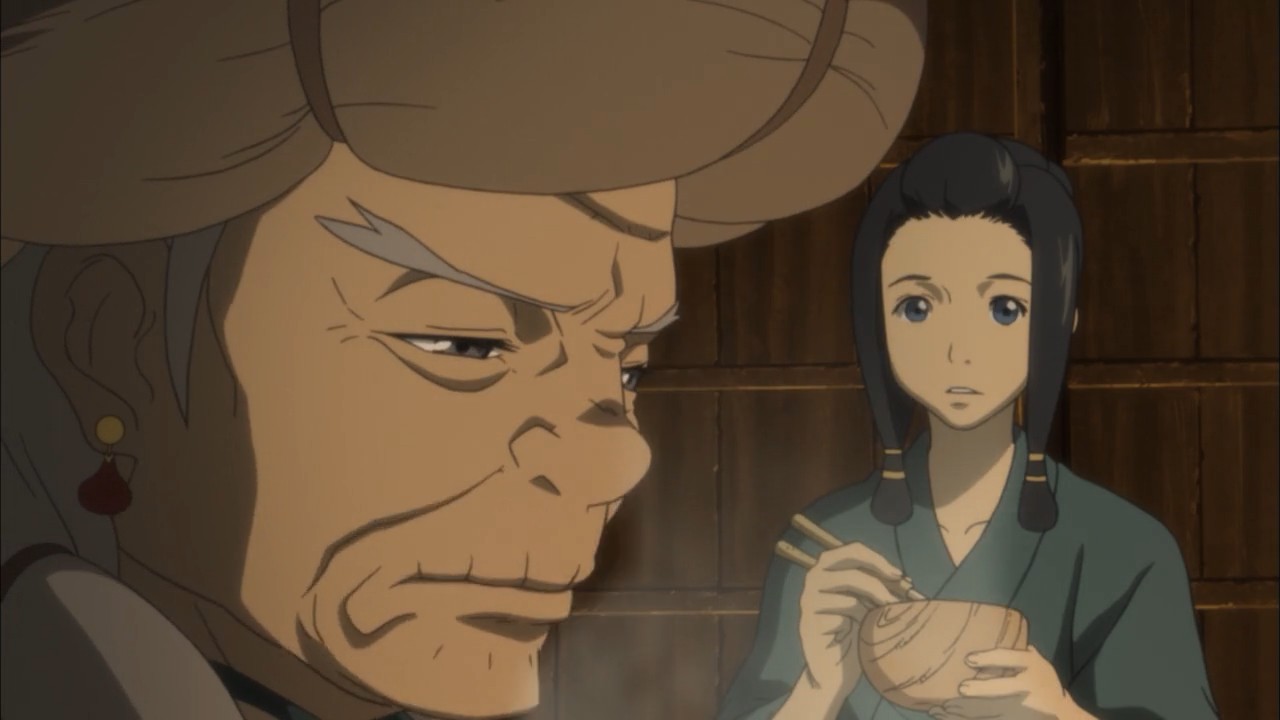
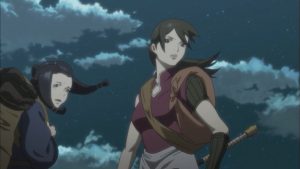
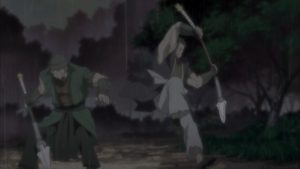
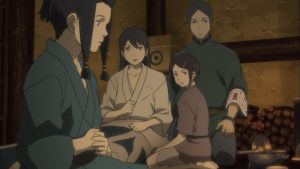
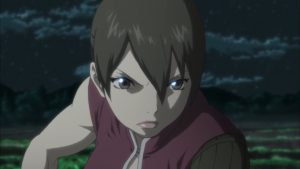
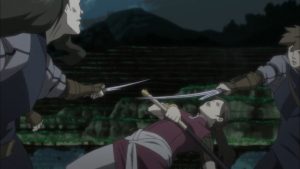



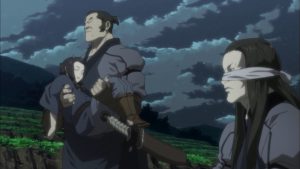
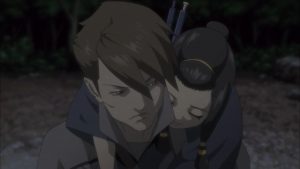

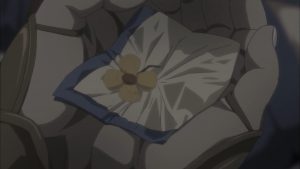
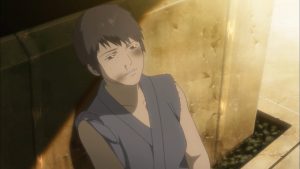

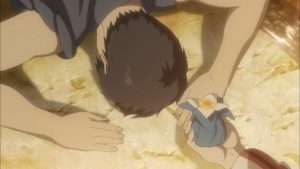
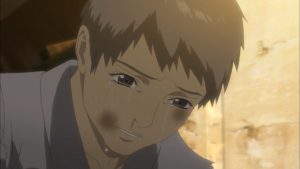
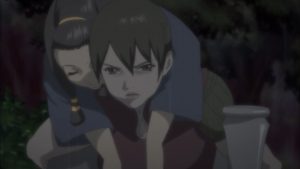
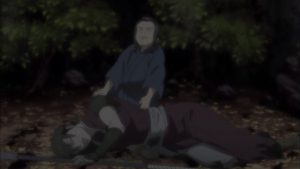

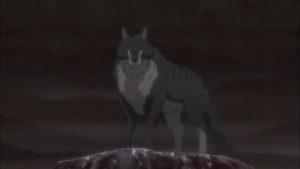
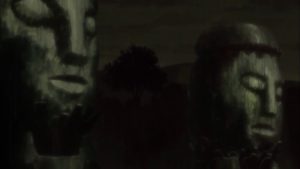

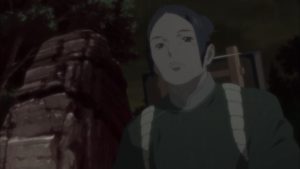
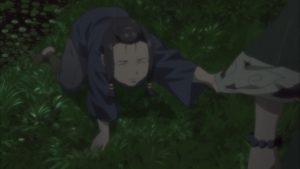
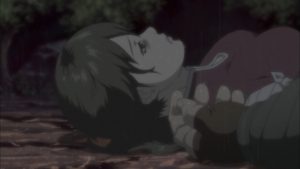
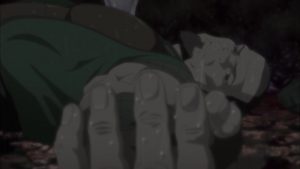
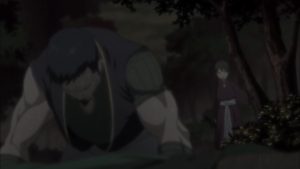
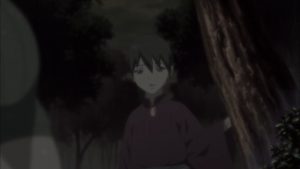
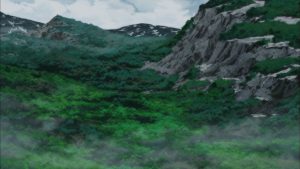

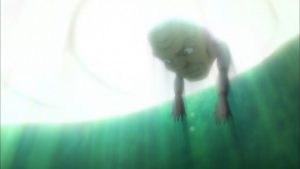
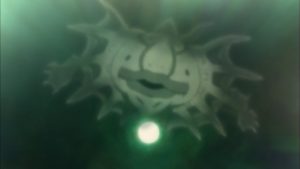
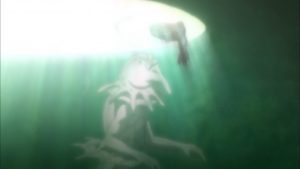
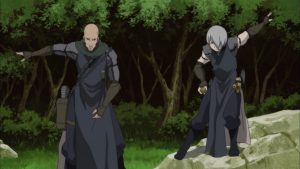
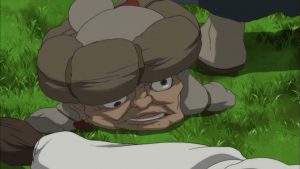
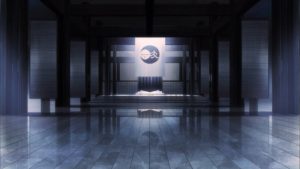
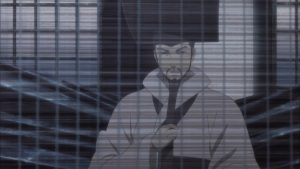
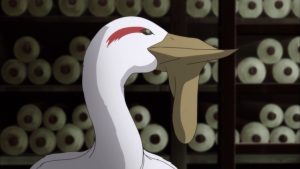

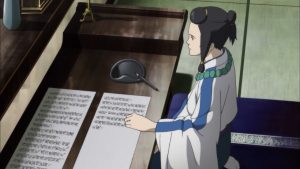
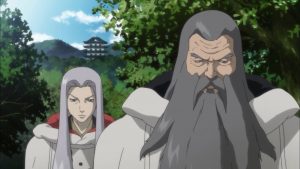
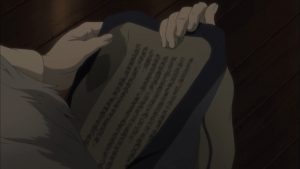
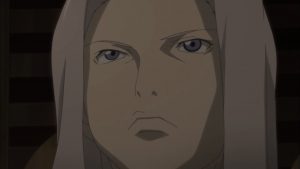
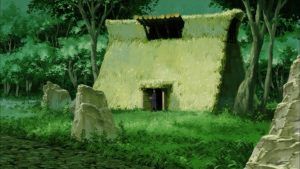
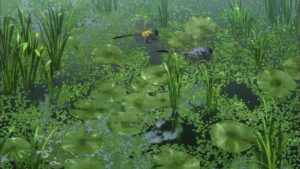
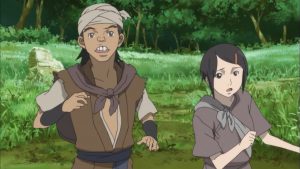
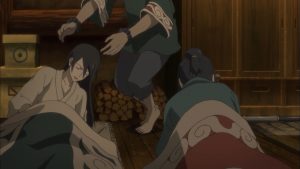
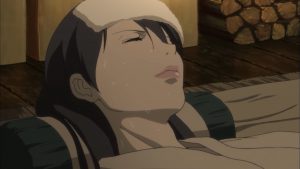
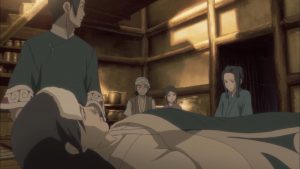
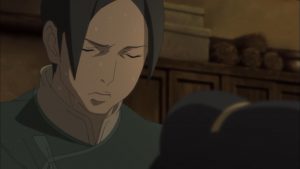
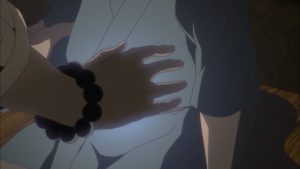
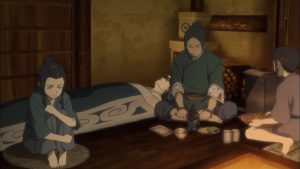
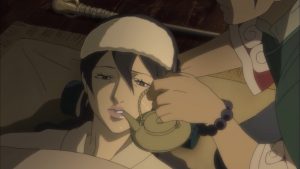
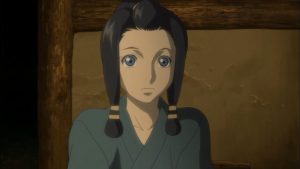
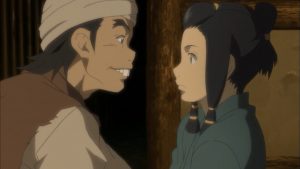
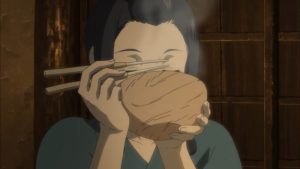
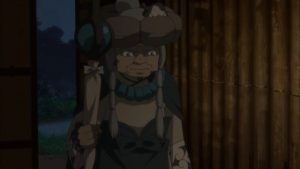
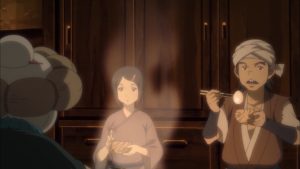
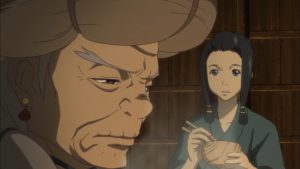
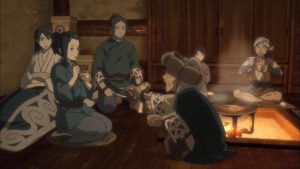
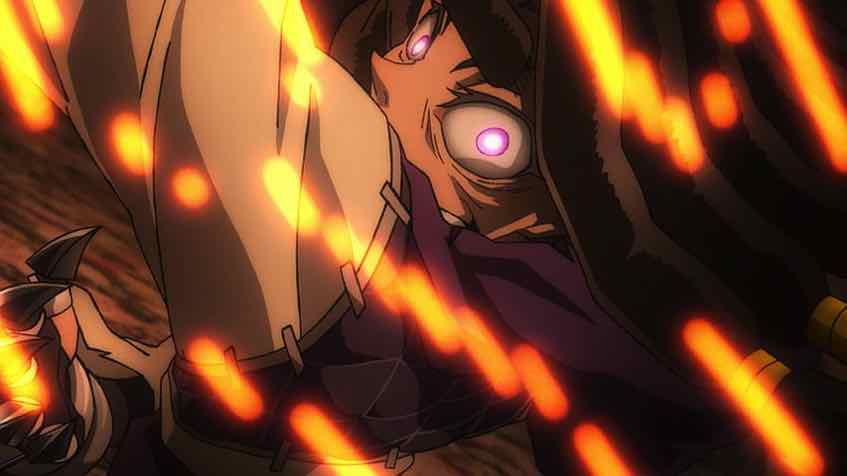
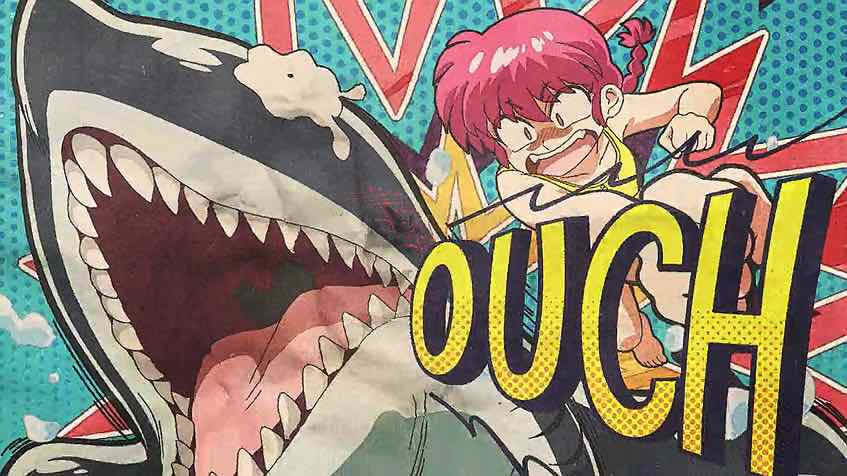
Dauntingoverlord
May 9, 2020 at 8:31 amTamago!!!!!
Panino Manino
May 9, 2020 at 11:34 amAlways riles me that Torogai’s does not point to Touya.
He is right there in front of her holding an egg!
Guardian Enzo
May 9, 2020 at 12:26 pmThis is not the egg she’s looking for.
Panino Manino
May 9, 2020 at 11:32 amIf was I in Chagum’s place in the third episode I would have died, because I have acrophobia.
I always think that those rocks are a bit too steep to clime. Yes, that’s why the rope is there, but still, even knowing that they only use that path to avoid the danger of crossing the path of a dangerous animal I still can’t help but think that I would take the risk.
That flashback justifying why that body guard tried to kill Chagum himself, “he was nice to me once”, it’s a classic in anime, right? But a bit understandable. It’s a bit of a rarity for a prince to give signs of being a genuine good caring person.
Still from the third episode, even knowing what happens that hallucination Balsa has still plays seamlessly like it’s really happening. But maybe they could shown the fight in a way that didn’t let us see the faces of those two fighters, after all, when Jiguro entered the scene his face was hidden by the lance, and at the end of the scene Balsa imagined the spear at her side as that dead man, symbolizing what her weapon means to her. But this is just me trying to find something to complain, like, Balsa’s hair is “too smooth”. But I imagine that drawing her hair more frayed and wild would be really hard.
Now, enough of bad things.
Something that I was waiting to praise is how good the world building is. Twelve Kingdoms is always praised for it’s world, but Seirei no Moribito is better because the characters and the story never stops to explain the places and how things work. The characters only explain what the scenes requires them to explain, and explain for the character hearing the explanation, not to us. The world building is mostly done by the details in each episode, the cities and others places we see feels very authentic and convincing. It was cool to see the attention to the geography of the palaces. In the second episode during the fire we see the star readers at their tower watching the fire and at the end of that scene we have a shot of Gakai looking Sagum’s palace instead of Chagum’s burning palace. In the fourth episode we can see both from Sagum’s study windows and we have a better notion of how close all those places are, how it’s easily to keep an watch at everything and everyone, adding paranoia to the situation. That place is a very policed and tied world.
Panino Manino
May 9, 2020 at 11:47 amAbout those fight scenes, while still very good, it’s not the animation and choreography that impress me more anymore.
What impress me is how Balsa’s “character” is displayed by the way she fights. We actually see that fierce look that the Second Empress said she had, she really deserves her reputation. This is apparent when her spear breaks and she strikes without caring about being killed, we can noticed that she did something notable in that split second even before any character explaining.
More than to impress with the animation, that fight was designed to show and establish a lot of little things, like Jin not being able to ignore that Balsa was really trying to save Chagum’s life in fighting against them.